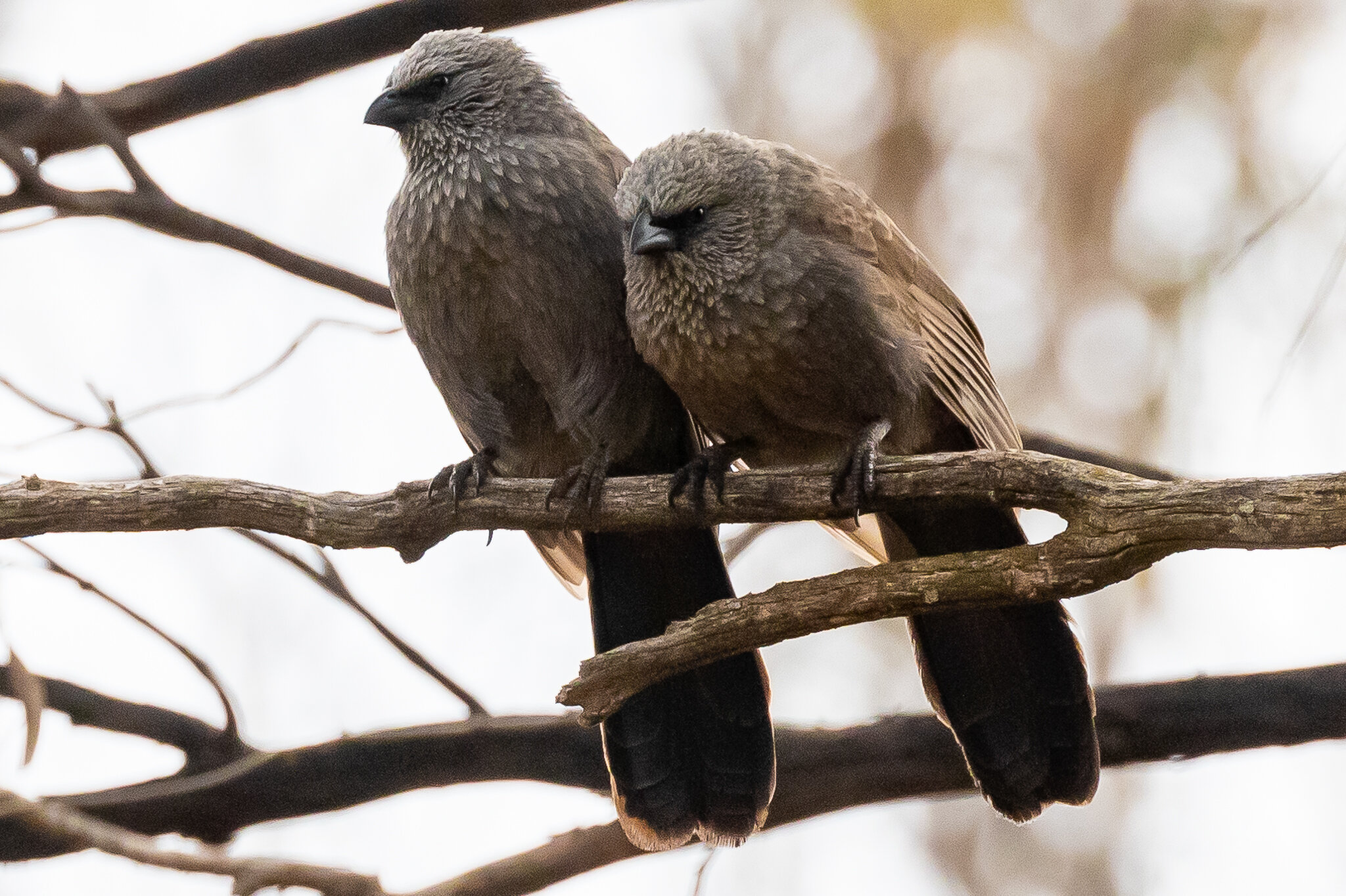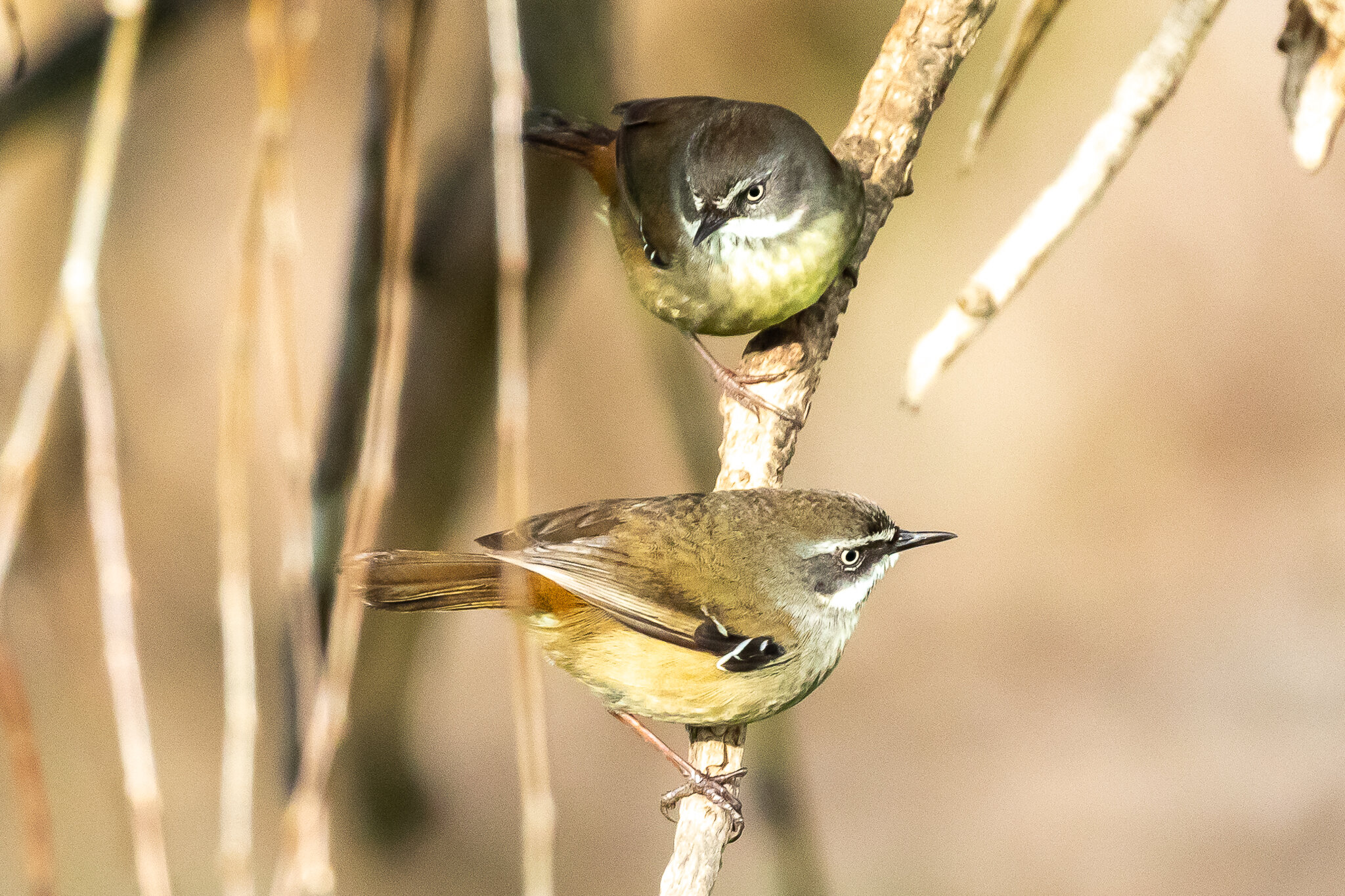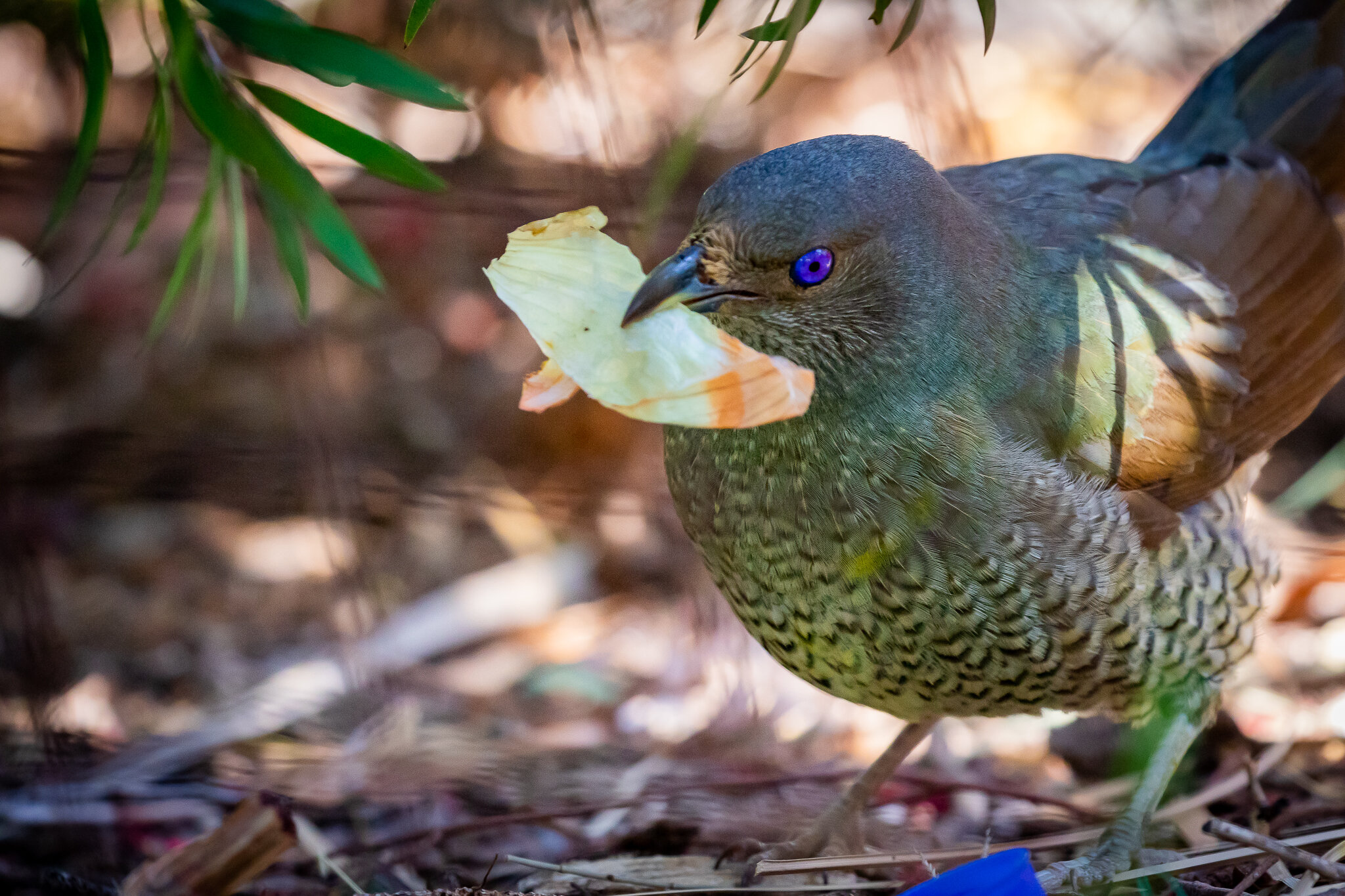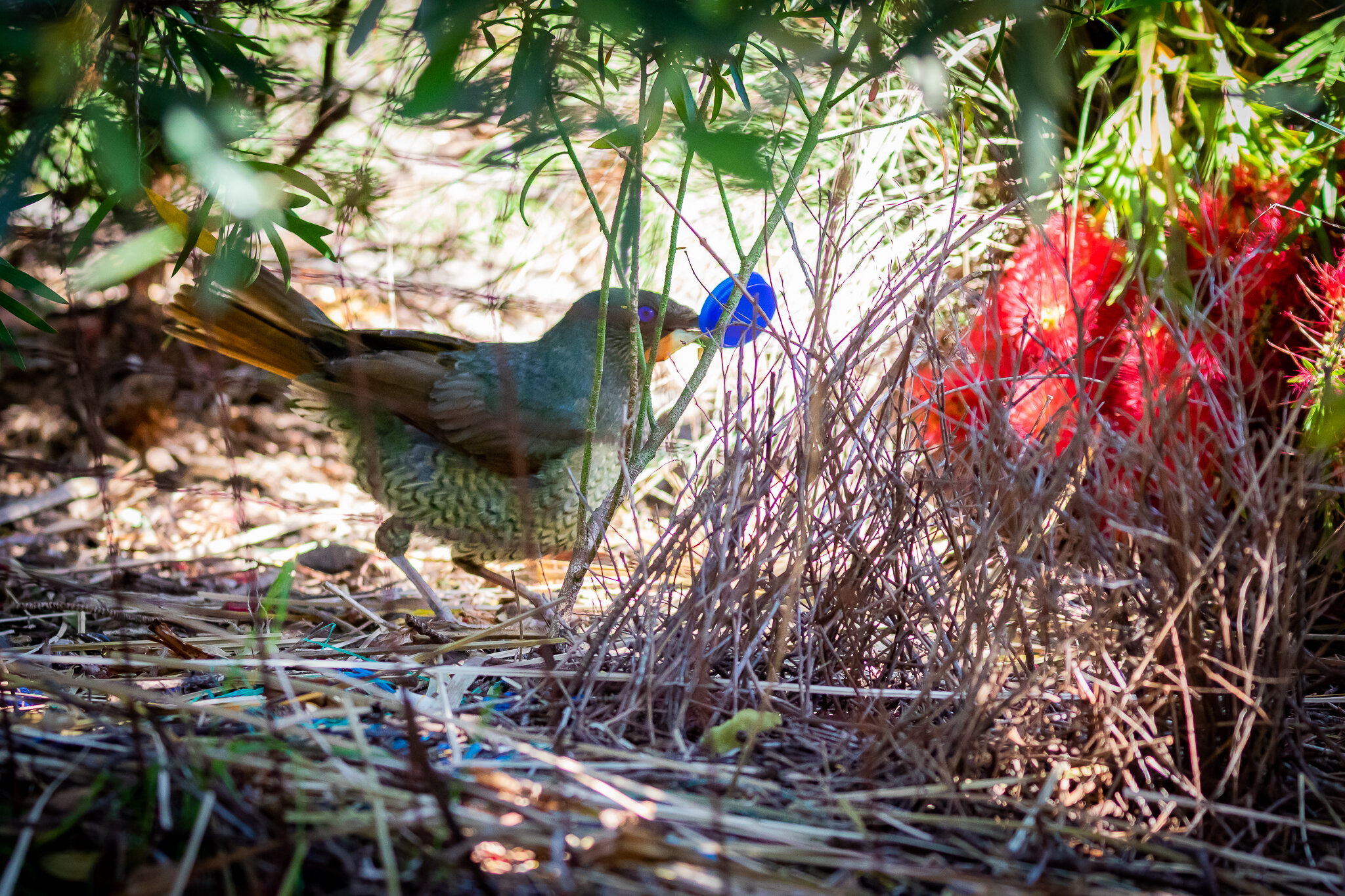It was back to the south coast NSW surveys last week to follow up after recent strong winds and tree damage. In the township the species count was up slightly and there were more birds to count due to flocks of Rainbow Lorikeets and Little Corellas. The town is still providing home to birds displaced by bush fires with Golden Whistlers and White-browed Scrubwrens in town gardens.
Three Dusky Woodswallows were unexpected visitors to the survey site, swooping above the treetops.
Bird numbers in bush sites are recovering, but not back to the pre-drought levels of 2017. Increases on sites vary with the severity of the fires, especially whether the crowns are green or not. Some areas are still black and barren and have not changed much since the fires, graced by the occasional Australian Raven or Eastern Yellow Robin.
There are plenty of small birds around; Fairy-Wrens, Thornbills, White-browed and a few Large-billed Scrubwrens.
Some areas with smaller scrub show no sign of recovery, the increased light after burning allows a thick mat of grass and weeds to flourish below the charred remains.






















































